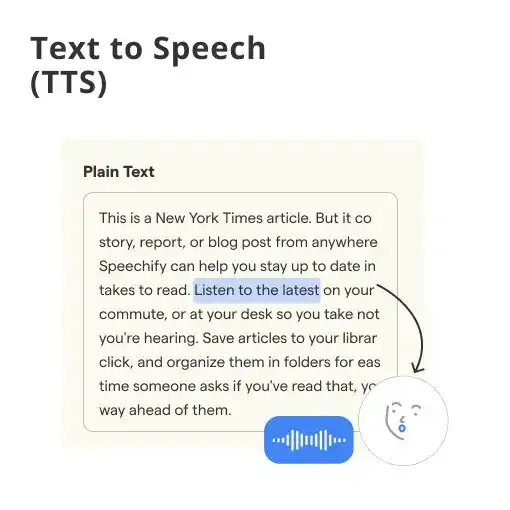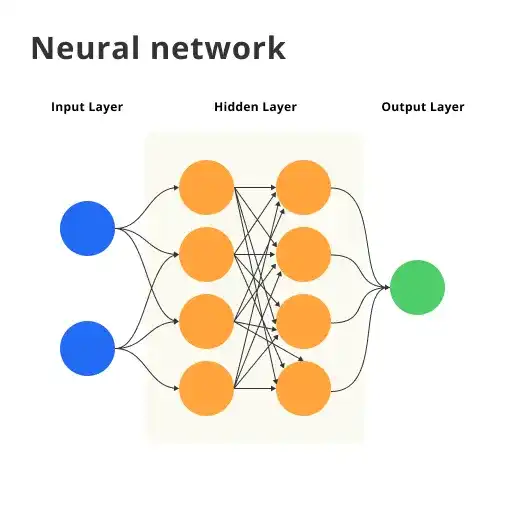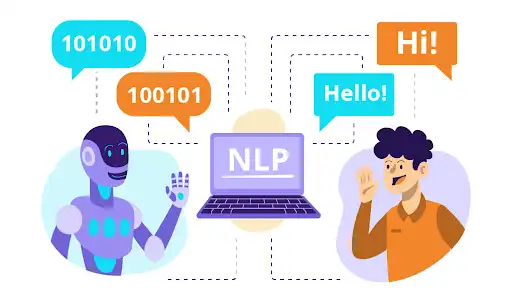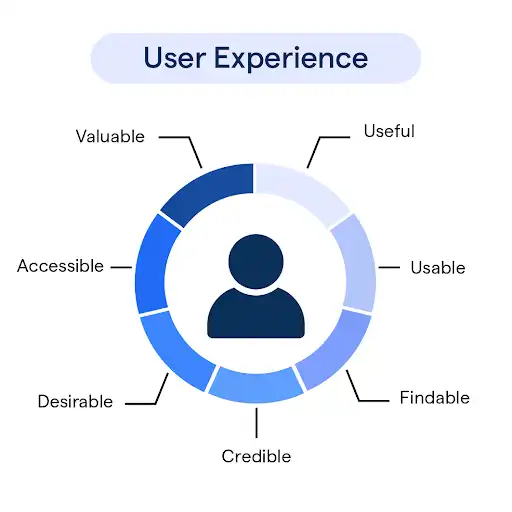Introduction
Did you know the global emotion detection and recognition market was worth $32.95 billion in 2021. It is expected to grow at a compound annual growth rate (CAGR) of 16.7% from 2022 to 2030. This means that the market is expected to reach $136.46 billion by 2030.
Emotion AI Text-to-Speech combines cutting-edge technology with human emotions, creating voices that can express joy, sadness, excitement, and empathy.
Traditional text-to-speech systems often lack emotional nuance, but with this innovative approach, AI emotion recognition systems can analyze and mimic human emotions, revolutionizing communication with emotion AI systems and digital information.
Ai emotion recognition enhances user experience by making interactions more authentic and compelling. Emotionally engaging content is more memorable and impactful, whether it's in audiobooks, virtual assistants, or customer service interactions.
The applications of Emotion AI Text-to-Speech are vast. It can be used in healthcare to provide emotional support to patients with mental health challenges and in advertising to create impactful campaigns. The possibilities for this technology are endless.
Understanding Emotion-Based AI Text-to-Speech

Emotion-Based AI Text-to-Speech is a groundbreaking technology that brings a new emotional depth to synthesized voices. Let's explore what this concept entails.
Definition and Concept
Emotion AI is an advanced text-to-speech technology that aims to enhance the naturalness and expressiveness of synthesized voices by incorporating emotions into speech synthesis.
Instead technology adds emotional cues rather than monotonous tones. This technology system conveys joy, sadness, excitement, empathy, and more.
Evolution of Text-to-Speech Technology
Text-to-speech technology has come a long way since its inception. Initially, early systems focused solely on converting text into speech, with limited emphasis on human-like qualities.
However, as user expectations grew, the demand for more natural and engaging interactions led to the development of Emotion AI Text-to-Speech.
Introduction to Emotion-Based AI Text-to-Speech

Emotion-Based AI Text-to-Speech introduces a paradigm shift in how we communicate with AI systems and consume digital content.
Leveraging this powers AI systems to analyze, understand, and mimic human emotions in synthesized voices.
By leveraging vast amounts of emotional data and advanced algorithms, the result is a more authentic and captivating user experience.
How Emotion-Based AI Text-to-Speech Works
Below are the works design for emotion ai Text-to-Speech.
Data Collection and Analysis

Emotion AI Text-to-Speech relies on extensive data collection and analysis to understand and reproduce emotions accurately.
AI systems gather emotional data from various sources, including human voice recordings and emotional databases.
Through research, the data to identify machine learning techniques, patterns, and correlations between emotional cues and speech parameters.
Emotion Synthesis Techniques
Emotion synthesis techniques form the core of Emotion AI Text-to-Speech.
These techniques enable AI emotion recognition to generate speech that reflects specific emotional states. Let's take a closer look at some common approaches used:
Deep learning and neural networks

Deep learning and neural networks have revolutionized many AI applications, including Emotion AI Text-to-Speech.
These techniques involve training neural networks on large emotional datasets to learn the relationships between text, emotions, and speech.
The trained models can then generate emotionally nuanced voices based on input text.
Natural language processing (NLP) algorithms

Natural language processing (NLP) algorithms play a crucial role in Emotion-Based AI Text-to-Speech by enabling AI systems to extract emotional content from text inputs.
These algorithms analyze text for sentiment, emotional keywords, and context, providing valuable cues for generating emotionally appropriate speech.
Integration with Text-to-Speech Systems
To make emotion AI Text-to-Speech integrates with traditional text-to-speech systems.
This Integra to make emotions come alive in synthesized vocation involves mapping emotions to speech parameters determined during the data analysis.
In real-time scenarios, AI emotion recognition dynamically adjusts speech parameters based on the emotional context of the text, ensuring a seamless and emotionally engaging output.
The Importance of Emotional Depth in Communication
Here are some of the importance of emotional depth in communication.
Understanding the Power of Emotions
Emotions have a profound impact on our perception and understanding of information.
They color our experiences, influencing how we remember and interpret the world. Emotions, context, and meaning help us navigate complex social interactions.
Emotional Impact on Human Perception
Research shows that emotions affect our cognitive processes, memory, and decision-making.
When information is presented in an emotionally engaging manner, it becomes more memorable and resonates deeply.
Emotion AI Text-to-Speech capitalizes on this by infusing synthesized voices with emotional depth, creating a richer and more immersive experience for users.
Suggested Reading:
Can AI Feel Emotions: Unraveling the Emotional Spectrum
Emotions as a Communication Tool
Emotions are an integral part of how we connect with others. They allow us to convey empathy, establish rapport, and build trust.
Emotion-Based AI Text-to-Speech enables AI systems to communicate with emotional nuance, opening up new possibilities for meaningful human-like interactions.
Applications of Emotion-Based AI Text-to-Speech
Emotion-Based AI Text-to-Speech has far-reaching applications across various domains, enhancing communication and user experiences in numerous ways.
Emotional Storytelling and Audiobooks

Imagine listening to an audiobook where the narrator's voice reads the text and conveys the character's emotions and the story's mood.
Emotion-Based AI Text-to-Speech brings stories to life, making them more engaging, immersive, and captivating.
Enhancing Emotional Support
Emotion-Based AI Text-to-Speech can play a crucial role in enhancing emotional support services.
It can be used to develop AI companions for emotional well-being, offer emotional support in therapy and counseling settings, and provide mental health applications that promote well-being.
Benefits and Potential Impact of Emotion-Based AI Text-to-Speech
Below are some of the benefits and potential impact of emotion ai Text-to-Speech.
Enhancing User Experience

Emotion-Based AI Text-to-Speech improves user engagement and empathy.
By conveying emotions authentically, AI systems create more meaningful connections with users, making interactions more human-like and enjoyable.
This enhanced user experience can increase satisfaction, brand loyalty, and positive word-of-mouth.
Increased Information Retention
When information is delivered with emotional depth, it becomes more memorable.
Emotion AI Text-to-Speech helps users retain and recall information more effectively, benefiting educational platforms, training programs, and other knowledge-sharing platforms.
Enhanced Accessibility for Individuals with Visual Impairments
For individuals Text-to-Speech provides a richer and more immersive experience.
By conveying emotional cues in synthesized voices to individuals with visual impairments, AI emotion recognition systems enable these individuals to engage with digital content more inclusively and meaningfully.
Suggested Reading:
Emotion Detection AI: Analyzing & Interpreting Emotions
Applications in Various Industries
The impact of Emotion AI Text-to-Speech extends across multiple industries.
In the entertainment and gaming industry, it can create more immersive and emotionally engaging experiences.
The advertising and marketing sector can evoke more robust emotional responses, resulting in more effective campaigns.
Ethical Considerations and Challenges Emotion-Based AI Text-to-Speech
Here are key ethical considerations and challenges of Emotion-based AI.
Privacy and Data Protection

Emotion-Based AI Text-to-Speech relies on collecting and analyzing emotional data. It is crucial to ensure that users' privacy is respected and their data is protected.
Manipulation and Deception Concerns
The ability of AI systems to mimic human emotions in speech raises concerns about manipulation and deception.
It is important to establish ethical guidelines to prevent the misuse of Emotion-Based AI Text-to-Speech for manipulative purposes, ensuring that users are aware when interacting with AI systems rather than actual humans.
Overcoming Challenges and Limitations
To overcome challenges of emotion-based AI text-to-speech follow these:
Cross-Cultural and Individual Differences in Emotional Expression
Emotions are expressed differently across cultures and individuals.
Emotion-Based AI Text-to-Speech systems must be trained on diverse emotional data to avoid biases and ensure that emotions are conveyed accurately and respectfully across different cultural and individual contexts.
Suggested Reading:
Emotion AI: Understanding AI's Sentiment Analysis
Bias in Emotion Recognition and Synthesis Algorithms
AI emotion recognition systems are only as good as the data they are trained on.
Biases present in training data can be inadvertently incorporated into Emotion-Based AI Text-to-Speech systems.
Future of Emotion-Based AI Text-to-Speech

The future of emotion-based AI text-to-speech are the following:
Multimodal Ai Emotion Recognition
Future advancements may involve integrating multiple modalities, such as facial expressions, gestures, and physiological signals, to enhance AI emotion recognition accuracy.
Combining these cues can provide a more comprehensive understanding of users' emotions, leading to more nuanced and authentic emotional synthesis.
Real-Time Emotion Detection
Real-time emotion detection can enhance Emotion AI Text-to-Speech by enabling systems to dynamically adjust speech parameters based on users' changing emotional states.
This capability can result in more adaptive and responsive interactions, creating highly personalized user experiences.
Context-Aware Emotion Generation
Future developments may incorporate contextual information to generate emotionally appropriate speech.
Understanding the context of a conversation, such as the topic being discussed or the relationship between participants, can enable Emotion AI Text-to-Speech systems to produce more contextually relevant and meaningful responses.
Incorporating Social and Cultural Factors
To ensure cultural sensitivity and inclusivity, future advancements may include better incorporating social and cultural factors into Emotion AI.
This can involve training AI emotion recognition systems on diverse cultural datasets and developing algorithms that account for cultural variations in emotional expression and communication styles.
Conclusion
Emotion AI Text-to-Speech is a game-changer in the world of communication technology.
By infusing synthesized voices with emotional depth, this innovative technology opens up new responsibilities, transforming how we interact with AI emotion recognition systems and consume digital content.
We also discussed the benefits and potential impact of Emotion AI Text-to-Speech across various industries.
From emotional storytelling and audiobooks to personalized virtual assistants and enhanced emotional support, this technology can revolutionize how we engage with digital content and services.
Looking ahead, the future of Emotion AI Text-to-Speech holds exciting prospects. Advancements in emotion recognition, real-time emotion detection, contextual understanding, and cultural sensitivity will further refine and enhance the capabilities of this technology, creating more authentic and immersive user experiences.
Introducing BotPenguin, the game-changer in chatbot services! Empower your business with AI-powered chatbots for seamless communication, improved customer support, and increased productivity. Revolutionize your interactions and stay ahead in the game with BotPenguin!
Frequently Asked Questions (FAQs)
What is Emotion-Based AI Text-to-Speech?
Emotion-Based AI Text-to-Speech adds emotions to synthesized voices generated by AI emotion recognition systems, enhancing naturalness and expressiveness.
How does Emotion-Based AI Text-to-Speech work?
Emotion-Based AI Text-to-Speech analyzes emotional data and uses techniques like deep learning to synthesize emotionally expressive speech.
Why is emotional depth necessary in communication?
Emotional depth enhances user experiences, increases engagement, and fosters meaningful connections with AI emotion recognition systems.
What are the applications of Emotion-Based AI Text-to-Speech?
It can be used in emotional storytelling, customer service interactions, personalized virtual assistants, assistive technology, and emotional support.
How does AI emotion recognition enhance the user experience?
Ai emotion recognition creates more engaging and empathetic interactions, improving retention, recall, and accessibility.



